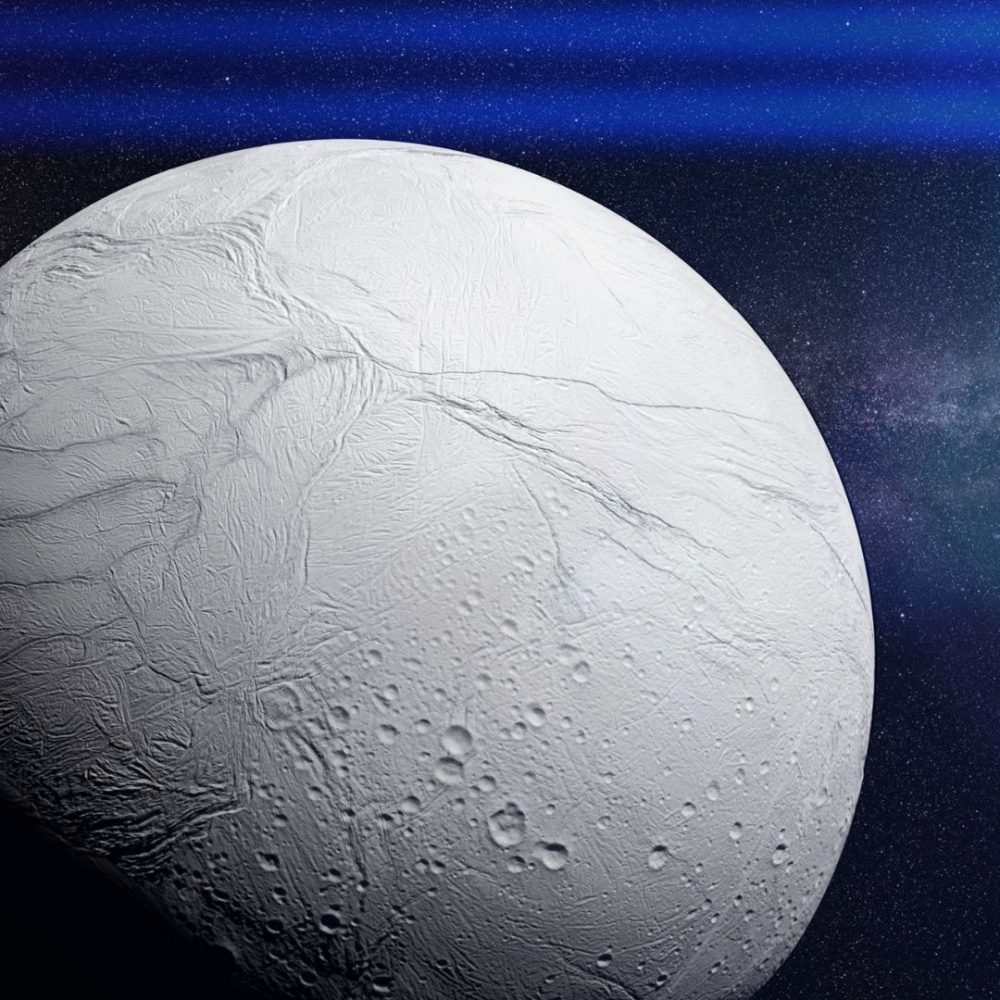
Saturn’s icy moon could indicate life!
Recommended for Preparatory Grades
According to researchers, there is evidence of hydrothermal vents in the oceans of Saturn’s icy moon Enceladus. Saturn is the solar system’s largest and most massive planet.
What is a hydrothermal vent?
A hydrothermal vent is an opening in the sea floor through which hot water full of minerals flows.
Saturn’s icy moon Enceladus expelled mysterious silica in enormous quantities. Consequently, the silica strongly suggested the presence of heat vents.
In other words, the silica particles were blasted from deep-sea hydrothermal vents, which also release heat into the surrounding seas, according to researchers.
These vents are created when the moon’s core is heated from the inside out. As a result, this causes ocean currents to transport the silica particles.
Key facts!
- Experts believe that it’s a thrilling discovery as it hints at the possibility of finding life deep within an alien ocean on an alien world.
- Yet, it has been something of a mystery as to how the silica travels from the interior of Enceladus, up through the planet’s deep ocean, and then out through the ice in the form of plumes.
- Enceladus is indeed a fascinating world.
- Experts point out that the thickness of the chunky ice layer that covers the icy moon ranges on average between 15 and 20 kilometres.
- However, its orbit around Saturn is elliptical rather than precisely circular.
- Consequently, when the moon’s distance from the planet fluctuates, it suggests that the gravitational pull between them does as well.
- Thus, the fluctuating gravity causes Enceladus to both stretch and compress, which leads to heating in the interior of the moon.
- Most importantly this indicates that behind the icy shell is a worldwide ocean that is liquid to a depth of more than ten kilometres.
- Further, the heat that radiates from the core prevents the water from freezing.
- A rising amount of data also implies that there are hydrothermal vents on Enceladus.
- And if there is life there, then researchers might be able to detect it without having to attempt to break the ice.
Similar Stories
- Astro Adventure: Saturn Breaks Record with 145 Moons!
- EELS: NASA’s Snake on Saturn’s Moon!
- Webb images stunning views of Saturn’s moon!
Watch a video
Well, NASA is spilling all the juicy details about the moon Enceladus!
Curious Times is a leading newspaper and website for kids. We publish daily global news aligned to your learning levels (also as per NEP 2020): Foundational, Preparatory (Primary), Middle and Senior. So, check out the News tab for this. We bring kids’ favourite Curious Times Weekly newspaper every weekend with top news, feature stories and kids’ contributions. Check out daily JokesPoke, Tongue Twisters, Word of the Day and Quote of the Day, kids need it all the time.
ME – My Expressions at Curious Times is your place to get your work published, building your quality digital footprint. And it is a good way to share your talent and skills with your friends, family, school, teachers and the world. Thus, as you will step into higher educational institutes your published content will showcase your strength.
Events, Quizzes and Competitions bring students from over 5,000 schools globally to participate in the 21st-Century themes. Here schools and students win certificates, prizes and recognition through these global events.
Sign-up for your school for FREE!
Communicate with us: WhatsApp, Instagram, Facebook, Youtube, Twitter, and LinkedIn.
0 (Please login to give a Curious Clap to your friend.)
